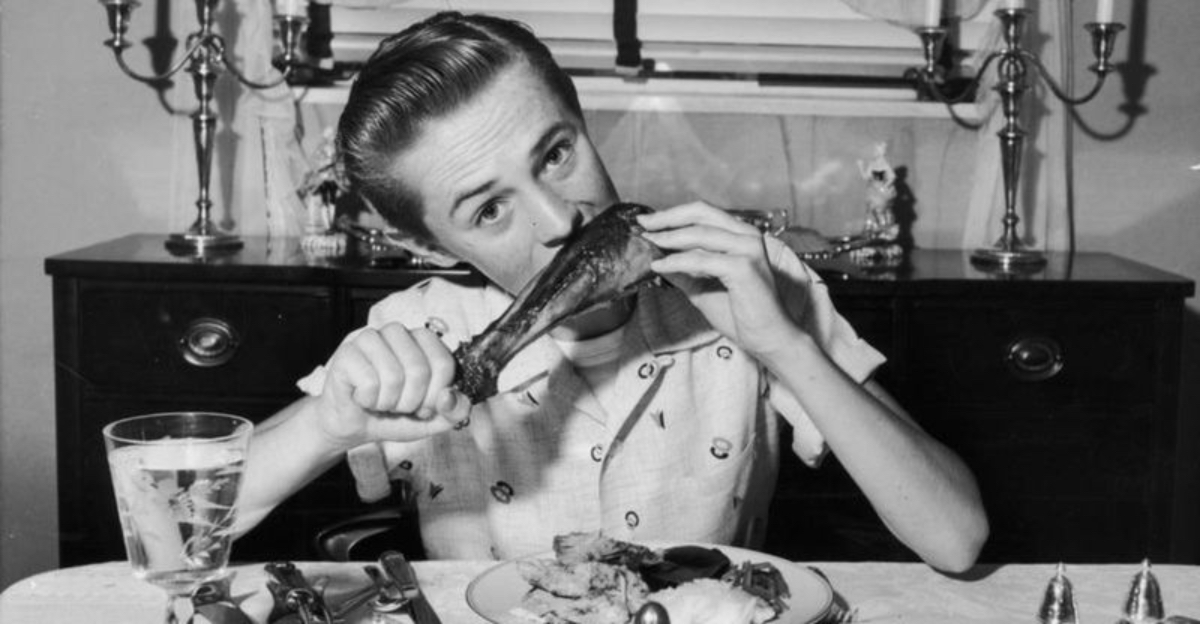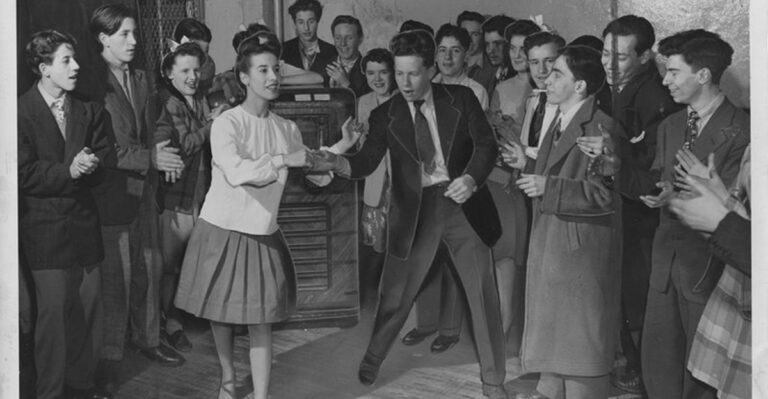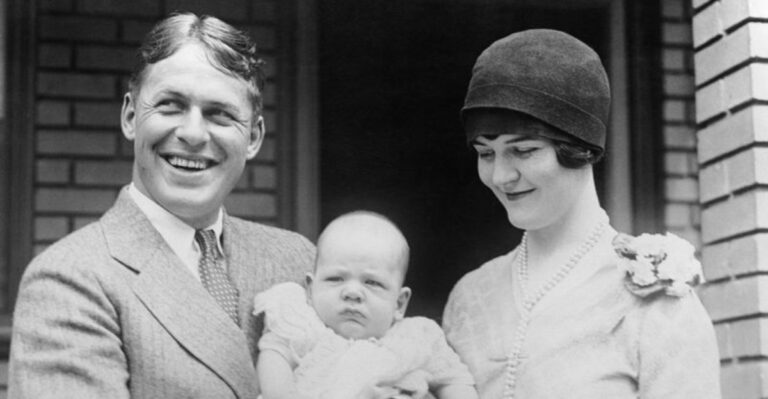18 Dinner Table Rules from the 1960s That Would Blow Modern Couples’ Minds
Imagine sitting down for dinner where every move — from how you pass the butter to the way you hold your fork — is governed by a strict set of unwritten rules.
Welcome to the 1960s, a time when dinner wasn’t just a meal; it was a performance. Couples were expected to follow a code of conduct that seems almost unthinkable by today’s standards.
From women being tasked with serving food just so, to rigid rules about conversation topics, the dinner table was a stage for showing off good manners — and maintaining traditional gender roles.
Fast-forward to today, and modern couples might be left scratching their heads (or laughing out loud) at some of these outdated expectations. Let’s dive into 18 dinner table rules from the 1960s that would absolutely blow modern couples’ minds!
1. Quiet as a Mouse
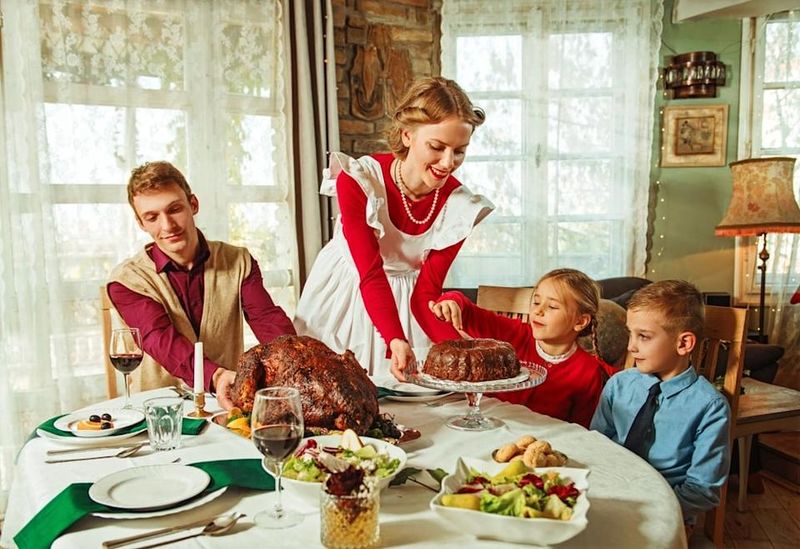
Silence was golden at the dinner table in the 1960s. Picture this: a whole family, sitting around a dining table, eating quietly. Conversations were minimal, if they even happened at all. The idea was that meals were meant for eating, not chatting. Any conversation was usually initiated by the head of the house.
If a child wanted to speak, they would have to wait for a lull in the meal. And even then, their comments had to be brief and polite. You could hear the clinking of cutlery and the soft rustling of napkins. Imagine the focus on food, the taste of every morsel savored without the distraction of idle chatter.
It was a time for reflection and appreciation of the meal prepared, rather than a social event. In today’s world, where conversation flows freely during meals, this silence might feel eerie and oddly intense.
2. Dress to Impress
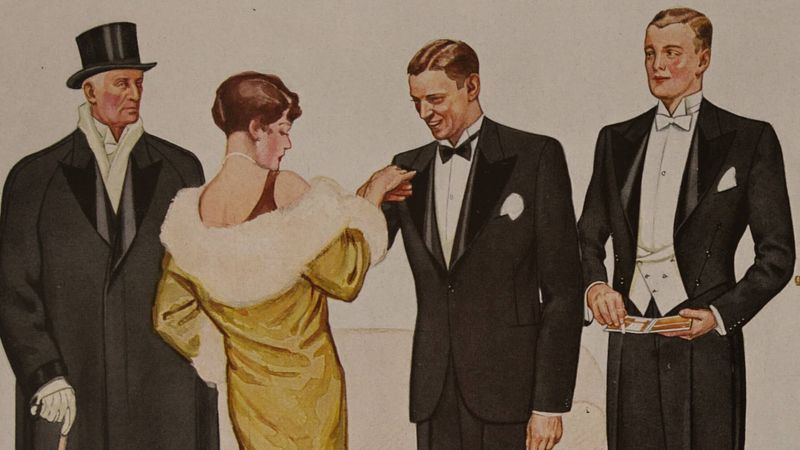
Back in the 1960s, dressing up for dinner wasn’t just for special occasions—it was a daily norm. Picture men donning their best suits and women in elegant dresses, complete with pearls and perfectly coiffed hair. The dinner table was treated almost like a theater, with each meal being a performance and the diners, the cast.
Children, too, were expected to wear their Sunday best, free of any stains or wrinkles. It was about showing respect for the food and the company. This ritual of dressing up brought a sense of importance and occasion to the everyday meal, making each dinner feel like an event.
Contrast this with today’s casual dinners where jeans and t-shirts are the norm, and you’ll find this rule both fascinating and somewhat exhausting to maintain. Formal attire made every meal feel like a celebration, adding an air of sophistication and class.
3. Assigned Seating
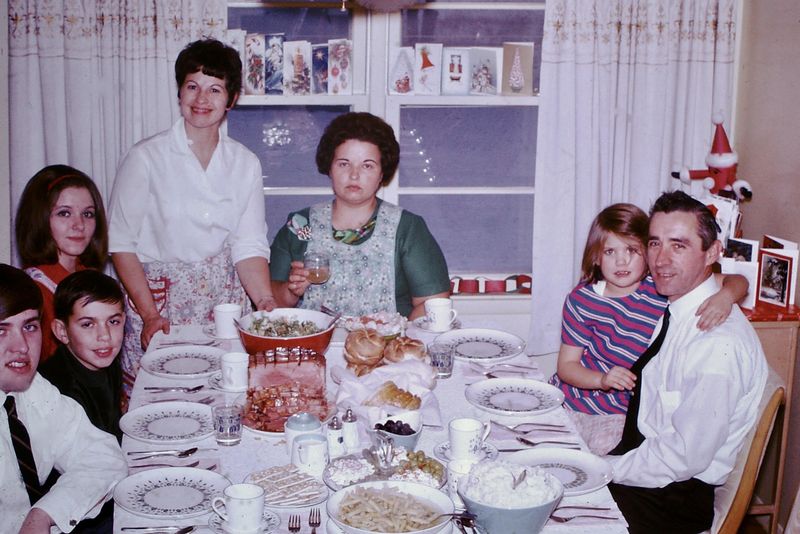
Imagine walking into a dining room where everyone has their specific seat, like in a scene from a classic movie. In the 1960s, assigned seating was a common practice at dinner tables. The head of the family, usually the father, sat at the head of the table.
Mothers and children had their designated spots, with seating arrangements often reflecting the hierarchy within the family. This wasn’t just about keeping peace; it was about maintaining order and respecting roles within the household.
It created a sense of structure and predictability, comforting for some, but maybe stifling for others. This emphasized the importance of family roles and expectations during that era. Today, this might seem overly formal or rigid, as modern families often opt for a more relaxed approach, choosing seats based on preference or practicality rather than tradition.
4. No Elbows on the Table
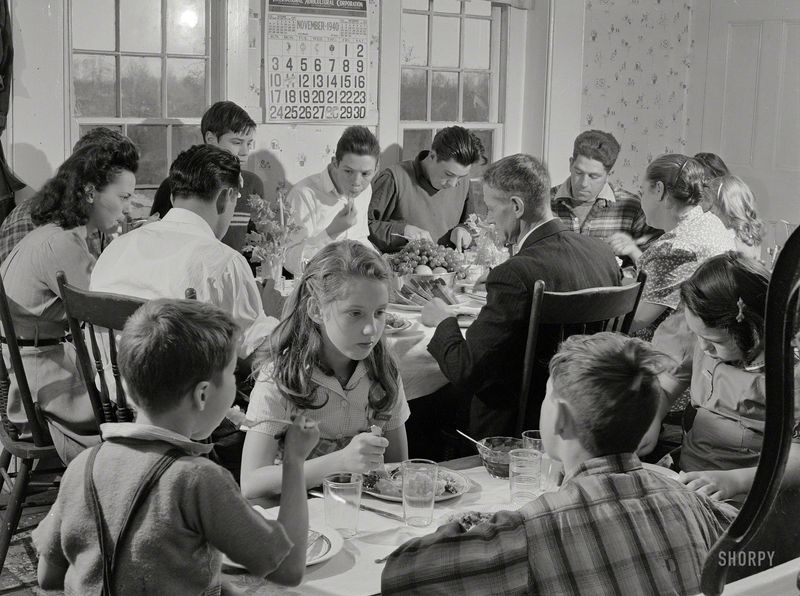
Elbows off the table! This rule was drilled into children at an early age. Dining etiquette in the 1960s was all about maintaining a proper posture at the table. Parents often reminded their kids to sit up straight, highlighting the importance of good manners. Placing elbows on the table was seen as disrespectful and lazy.
This rule was part of a larger emphasis on discipline and formality during meals. It was about showing respect for the food and the effort that went into preparing it. Today, while some families still adhere to this rule, many have relaxed their stance, prioritizing comfort over strict etiquette.
However, back then, your posture at the table was a reflection of your upbringing. The discipline instilled through such rules aimed to make sure children grew up with a strong sense of respect and appreciation for the dinner experience.
5. Wait to Be Seated
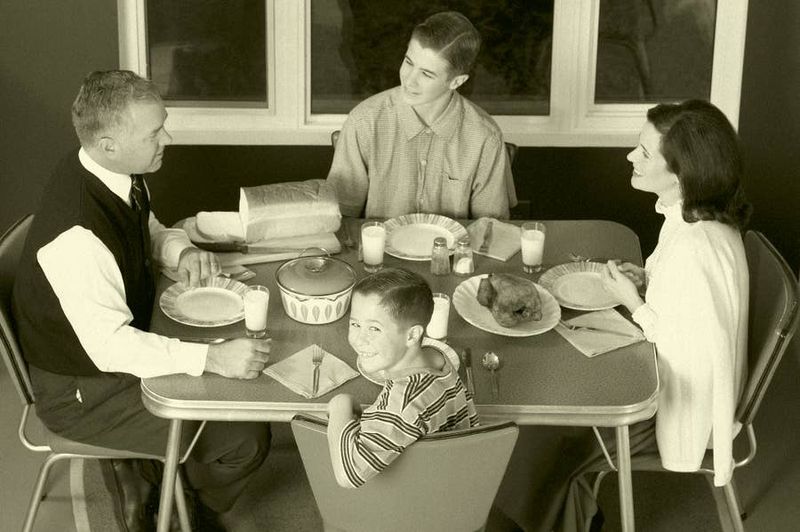
In the 1960s, the dinner began only when the head of the household took their seat. Everyone would patiently stand by their chairs, waiting for this cue. This rule highlighted the respect for family hierarchy and the traditional roles that were prevalent during that era.
It was a moment that underscored the importance of family unity and the respect given to the head of the family. In today’s fast-paced world, such a practice might seem like a quaint relic of the past. However, back then, it was a customary display of respect and patience.
It set the tone for the meal, preparing everyone’s minds and spirits for the dining experience. This ritual emphasized the importance of family roles and respect, grounding the family in a shared moment of anticipation before the meal.
6. Forks on the Left
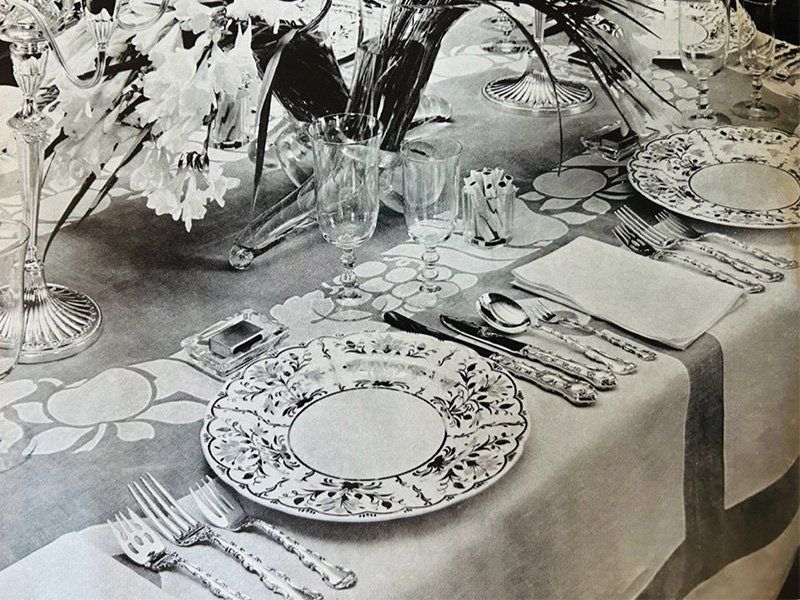
In the world of 1960s dining etiquette, the placement of cutlery was almost an art form. Forks belonged on the left side of the plate, with knives and spoons on the right. This wasn’t just a random choice; it was a well-established rule that defined a properly set table.
The precision and care taken in setting the table reflected the importance placed on meal times. This rule was part of a broader set of guidelines that dictated how to handle cutlery and napkins as well. It added a sense of order and discipline to the dining experience.
While some of these practices hold strong today, many have relaxed the rules, favoring practicality over perfection. Yet, for those who relish nostalgia, a table set in the classic style holds a charm that transports you back to a more formal time.
7. Napkin on Lap
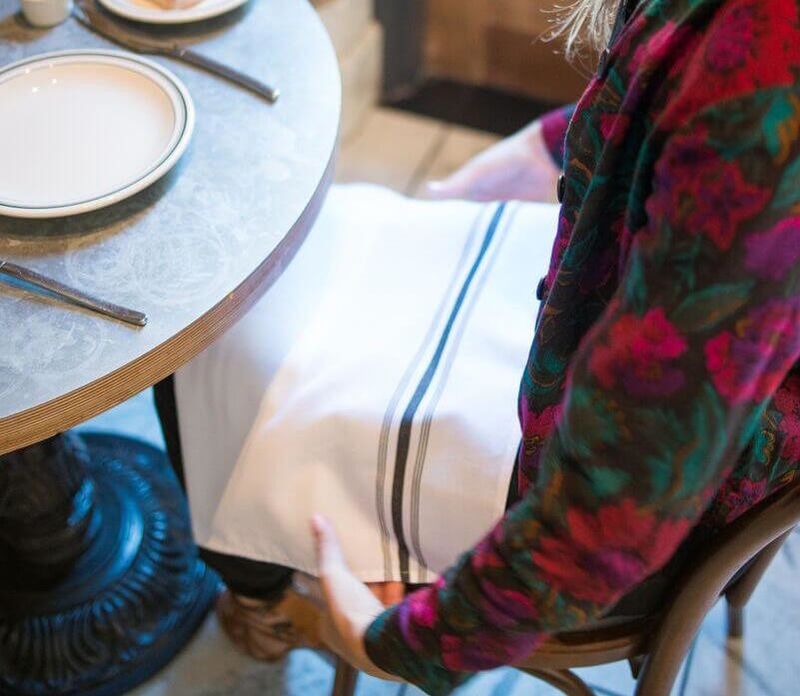
Ah, the humble napkin! In the 1960s, placing your napkin on your lap was one of the first things to do when you sat down for dinner. It was a simple yet significant gesture, reflecting a respect for cleanliness and orderliness. The napkin was not just a piece of cloth; it was a symbol of dining etiquette.
It served to protect your clothing from spills and was used to gently dab at your mouth if needed. In today’s world, while the use of napkins continues, the strictness surrounding their placement has somewhat loosened. Yet, back then, it was a non-negotiable part of the dining experience.
This rule underscored the importance of presentation and the effort people put into maintaining a neat and tidy appearance during meals. It was all about making the dining experience as pleasant and dignified as possible.
8. No Phones—Just Presence
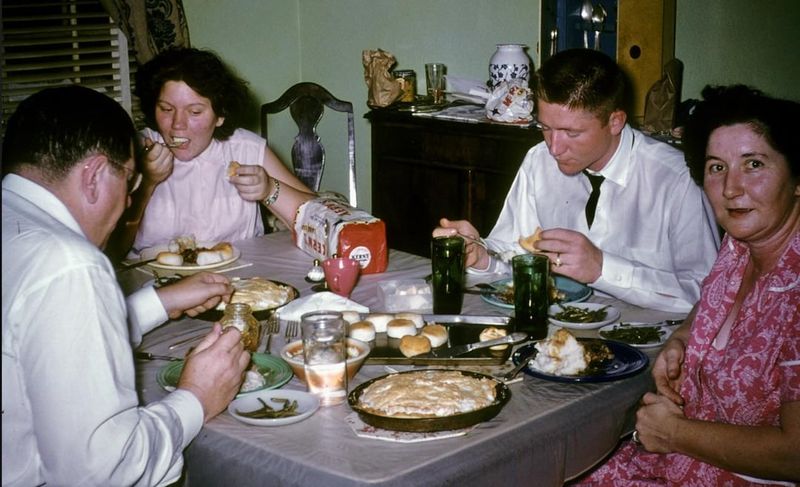
Back in the 1960s, dinner was a time for face-to-face interaction, unimpeded by the distractions of modern technology. Today, it’s hard to imagine a meal without the glow of a screen, but back then, the absence of phones and gadgets meant everyone was fully present.
Conversations, when they did happen, were intimate and genuine, with full attention given to the people around the table. This rule wasn’t about excluding technology—quite simply, it didn’t exist yet—but about creating a space for genuine connection and engagement.
In a world where digital distractions are a given, this can seem like a refreshing and almost radical concept. It reminds us of the value of undivided attention and the simple joys of engaging with loved ones without the barrier of technology.
9. Compliments to the Cook
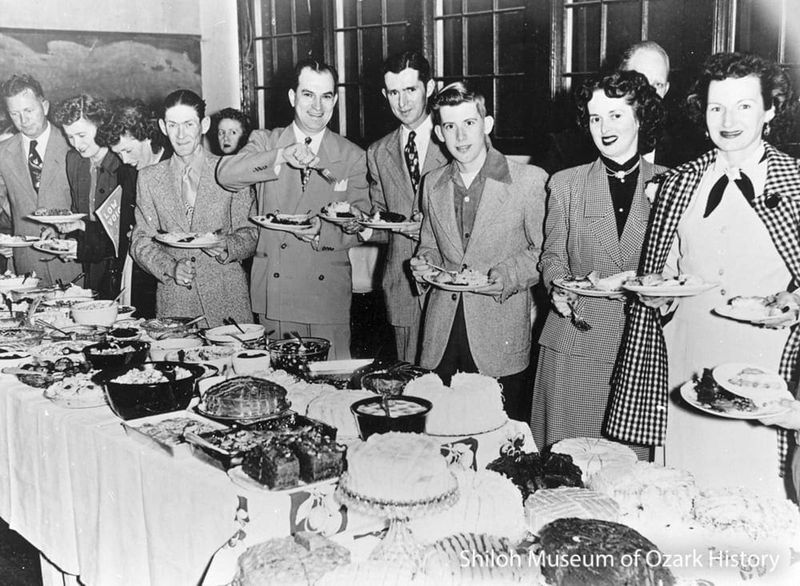
In the 1960s, showing appreciation for the meal was not just polite—it was expected. Compliments to the cook were a common practice, a way to express gratitude for the effort and love put into preparing the meal. It was a moment to acknowledge the chef, often the mother or another family member, for their hard work and skill.
Expressing gratitude fostered a sense of appreciation and respect within the family. Today, while compliments are still valued, they are often casual and sometimes overlooked. However, back then, it was a cherished ritual that reinforced family bonds and highlighted the importance of gratitude.
This rule served as a gentle reminder of the love and dedication that went into each meal, making dining not just a routine, but a heartfelt experience.
10. Wait Your Turn

Patience was a virtue at the dinner table in the 1960s. Meals were often served family-style, with dishes passed around the table. Everyone waited their turn to be served, ensuring that all family members had their share. This practice taught patience and consideration for others, emphasizing the importance of community and sharing.
It was a gentle reminder to think of others before yourself, fostering a sense of unity and cooperation. In today’s world, where convenience and speed often take priority, this rule might seem a bit old-fashioned. However, it brings to light the importance of mindful dining and the joy of shared experiences.
It was about appreciating each moment, savoring the anticipation, and enjoying the meal as a collective, rather than as individuals rushing through their own plates.
11. No TV During Dinner
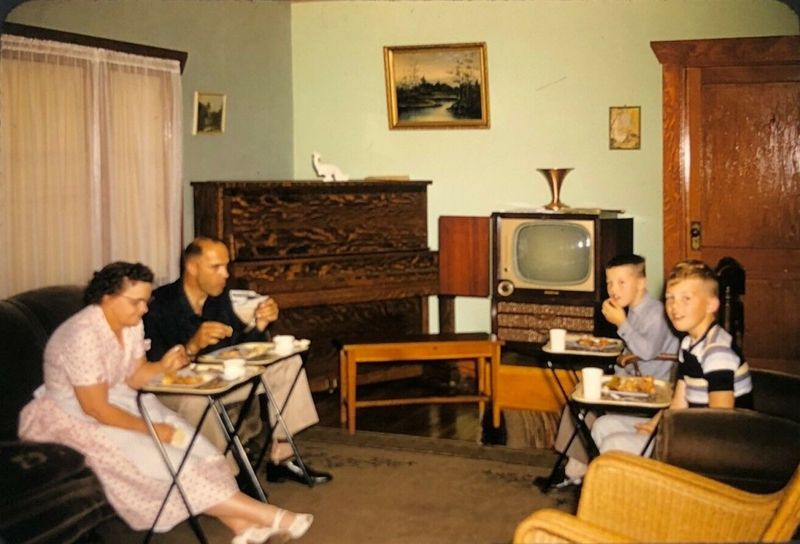
In the 1960s, dinner time was family time—no exceptions. Televisions were turned off, and the focus was solely on the people at the table. This rule was about prioritizing family interaction and conversation over the allure of TV shows. It was a time to disconnect from the world outside and connect with loved ones.
This fostered communication, allowing family members to share stories and experiences of the day. In today’s world, where screens are ever-present, this rule may seem quaint, but it serves as a reminder of the value of undistracted family time.
It was a chance to bond, share laughter, and create lasting memories, making dinner more than just a meal, but a cherished family ritual.
12. Finish What’s on Your Plate

During the 1960s, wasting food was a big no-no. The rule was simple: finish everything on your plate. This wasn’t just about being polite; it was a reflection of the values of thriftiness and appreciation for resources. Food wasn’t taken for granted, and leaving food uneaten was considered wasteful.
This rule instilled a sense of gratitude and responsibility, teaching children (and adults) to value what they had. In today’s world, where food is abundant and waste is common, this rule serves as a poignant reminder of past values.
It encourages mindfulness about consumption and a deeper appreciation for the effort behind every meal. While dietary preferences and awareness have evolved, the essence of this rule remains relevant: respect for food and the resources that bring it to our table.
13. Proper Table Manners
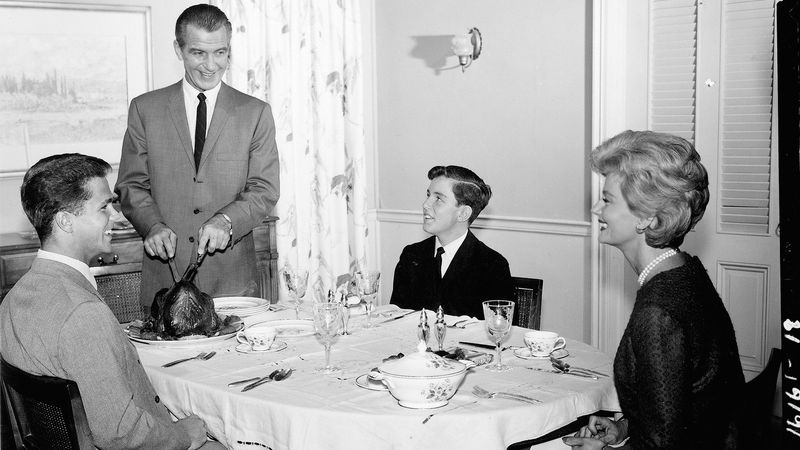
Table manners were a cornerstone of 1960s dining etiquette. From using utensils correctly to chewing with your mouth closed, these rules were drilled into children from a young age. The emphasis was on presenting oneself with dignity and respect at the table.
Good manners were seen as a reflection of one’s upbringing and character. This structured approach to dining taught discipline and respect for others, creating an atmosphere of civility and order. While some of these rules still apply today, many families have adopted a more relaxed approach.
Nevertheless, the essence of these manners—respect, consideration, and discipline—remains timeless. They remind us that dining is not just about nourishing the body, but also about nurturing relationships and showing respect for the company we keep.
14. No Chewing with Mouth Open
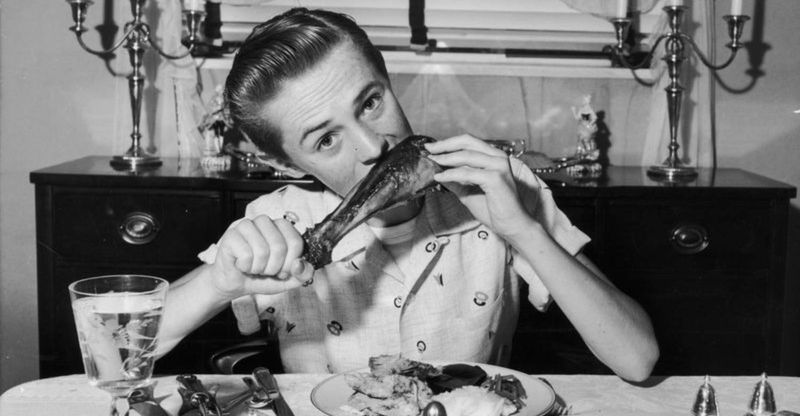
Chew with your mouth closed—one of the universal rules of dining etiquette in the 1960s. This rule wasn’t just about appearances; it was about respect and consideration for others at the table. The sound of open-mouth chewing was considered unpleasant, and children were taught from a young age to avoid it.
This was part of a larger emphasis on maintaining a pleasant and civil dining atmosphere. It was a lesson in self-control and awareness of how one’s actions affect others.
In today’s world, this rule still holds weight, though often in a more relaxed form. It underscores the importance of manners and the little courtesies that make dining a pleasant experience for everyone involved.
15. No Interruptions Allowed
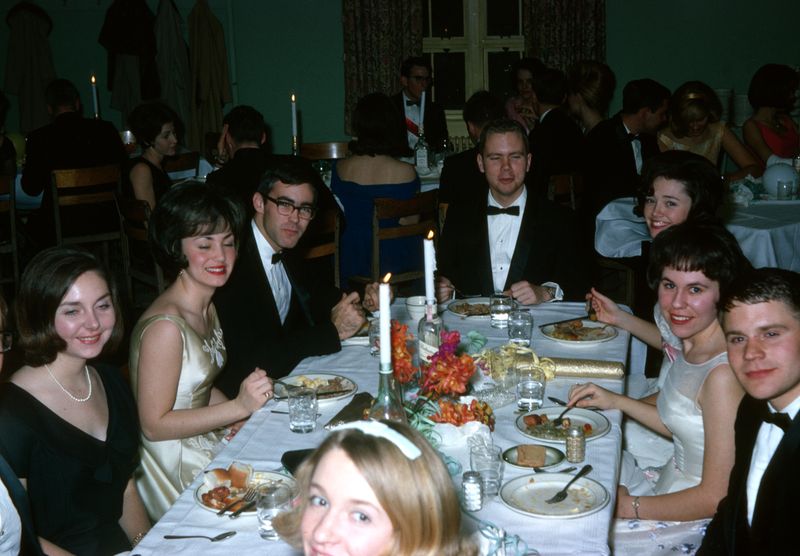
Imagine a dinner table where everyone waits their turn to speak. In the 1960s, interrupting someone during a meal was considered rude and disrespectful. This rule was about fostering attentive listening and respectful communication. It taught patience and the value of hearing others out fully before responding.
In an age where interruptions are commonplace, this practice stands out as a reminder of the importance of respectful dialogue. By waiting to speak, conversations became more meaningful and cohesive.
This rule encouraged thoughtful exchanges and underscored the importance of giving each person their moment to share. Today, while conversations might be more free-flowing, practicing active listening and respect for others’ voices remains a valuable lesson from the past.
16. Say Grace Before Meals
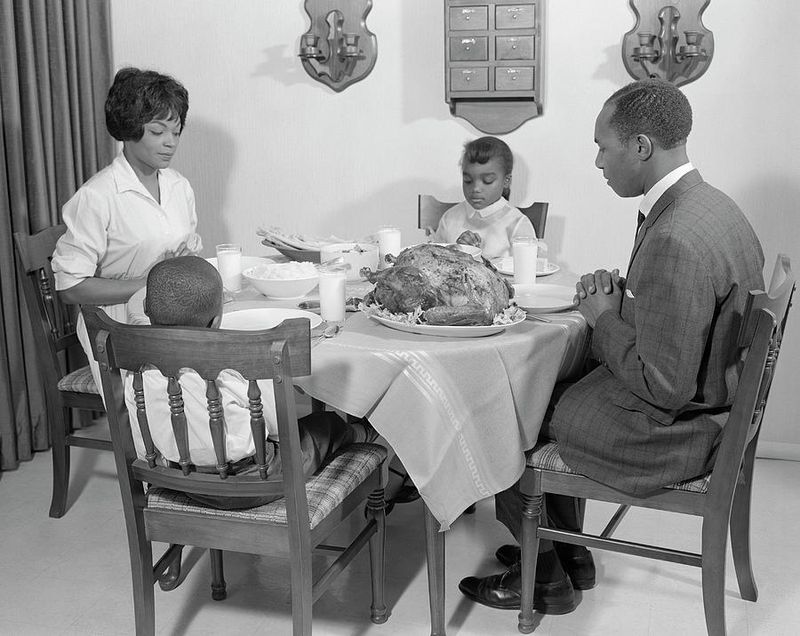
Before delving into their meal, many families in the 1960s took a moment to say grace. This ritual was about expressing gratitude, not just for the food, but also for the company and the blessings received. It was a moment of reflection and appreciation, setting a positive tone for the meal.
This underscored the importance of gratitude and mindfulness, reminding everyone to count their blessings. In today’s fast-paced world, where meals are often rushed, taking a moment to express gratitude can feel grounding and refreshing.
While the practice has evolved, the underlying message remains significant: taking a pause to appreciate the present and the nourishment provided. For many, saying grace was a valued tradition that brought families closer together and instilled a sense of thankfulness.
17. Serve Ladies First
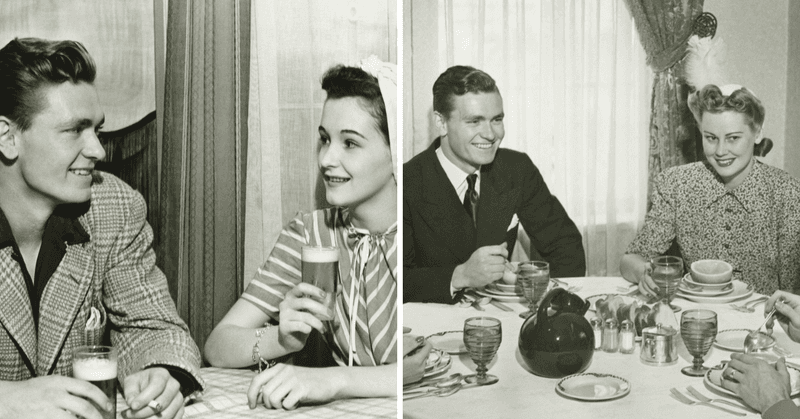
Chivalry was alive and well in the 1960s, especially at the dinner table. It was customary to serve the ladies first, a gesture rooted in respect and etiquette. This tradition showcased the importance placed on treating women with courtesy and honor during that era. It was a simple act that made meals feel special and thoughtful.
While this might seem quaint today, it highlighted a broader cultural emphasis on manners and respect. In modern times, this rule has relaxed, with a focus on equality and practicality taking precedence.
However, the sentiment behind it—a gesture of kindness and respect—remains relevant. It’s a reminder of the little acts of consideration that elevate ordinary moments into something memorable and meaningful.
18. Thank You After Meals

Expressing gratitude after a meal was a common practice in the 1960s. Saying “thank you” wasn’t just a polite gesture; it was an acknowledgment of the effort and care put into preparing the meal. This fostered a culture of appreciation and respect, reinforcing family bonds.
It was a simple yet significant way to show love and gratitude, creating a positive and respectful dining atmosphere. Today, while expressions of gratitude are still valued, they are often more casual. However, taking a moment to say thank you remains an important tradition, reminding us of the effort behind every meal.
It’s a way to encourage mindfulness and appreciation, turning each meal into a shared expression of gratitude and love, strengthening the connections between family members.

